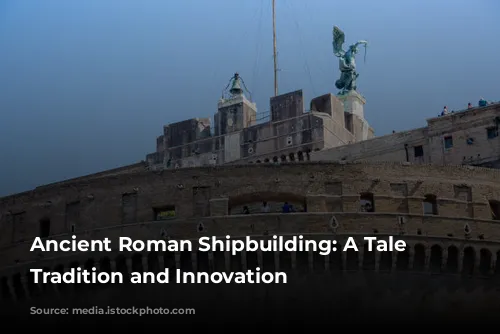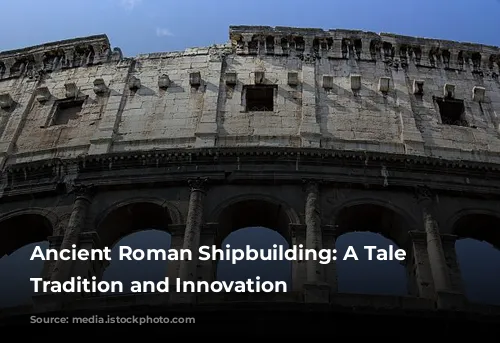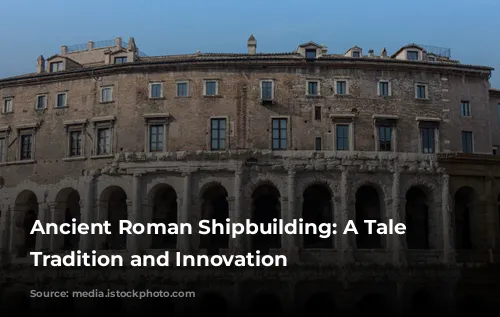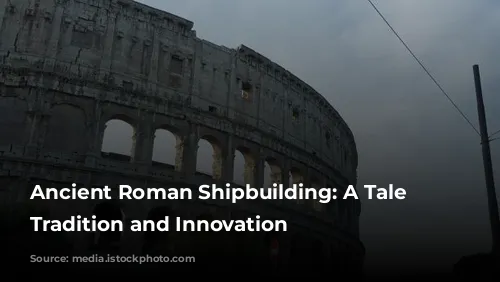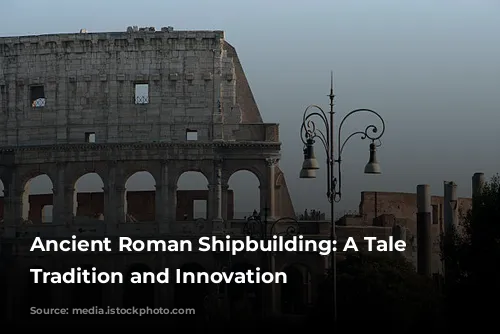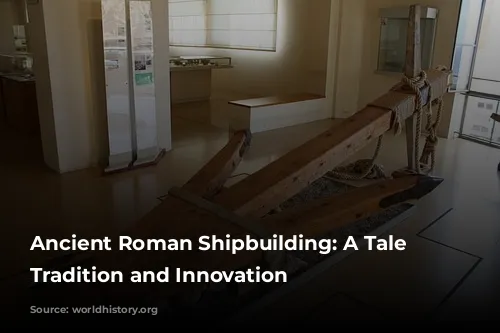Imagine a time before computers and sophisticated tools. Before shipbuilding became a scientific endeavor, it was an art form. Ancient Roman shipbuilders relied on their knowledge, experience, and the skills passed down through generations. They weren’t born sailors; they were land-based folks who learned from their conquered neighbors – the Carthaginians, Greeks, and Egyptians. These civilizations had centuries of experience in shipbuilding, and their skills were eagerly absorbed by the Romans.
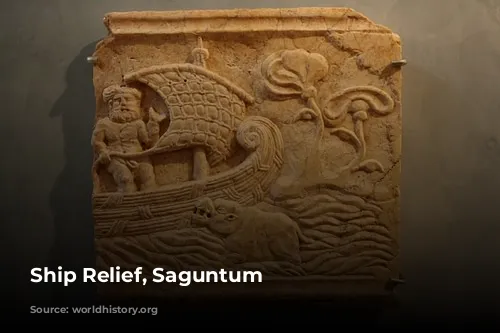
The Evolution of Roman Shipbuilding
How did Roman shipbuilders craft their mighty vessels? The answer lies in the careful study of ancient texts and the excavation of ships themselves. It seems that Romans started by building the outer hull first, stitching the planks together. As time progressed, they embraced a more sophisticated technique – the mortise and tenon method, where planks were joined using interlocking pieces of wood. This method, adopted from the 6th century BCE onwards, brought a significant leap in ship construction.
But there was another major shift in shipbuilding. In the early centuries of our era, Mediterranean shipbuilders embraced a new method, still used today. This involved constructing the frame first and then building the hull around it. This change allowed for a more systematic process and dramatically reduced the time required to build ships.
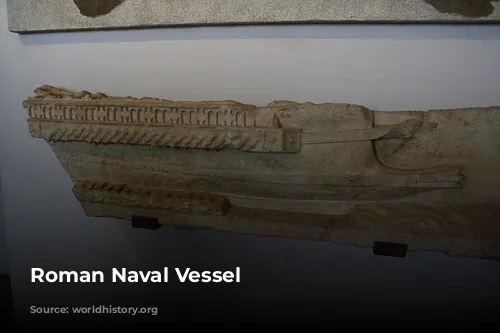
The Rise of the Roman Navy: Power on the Waves
The Roman navy was a force to be reckoned with. They ruled the Mediterranean, which they proudly named Mare Nostrum (“our sea”). Their warships were designed for speed, maneuverability, and resilience. They could withstand damage and still stay afloat, a crucial advantage in naval battles.
These warships were built for close-quarters combat. They were shallow-draft vessels with a unique hull shape, allowing them to navigate near the coast. Their most powerful weapon was the ram, a bronze spearhead used to pierce enemy hulls and disable their oars.
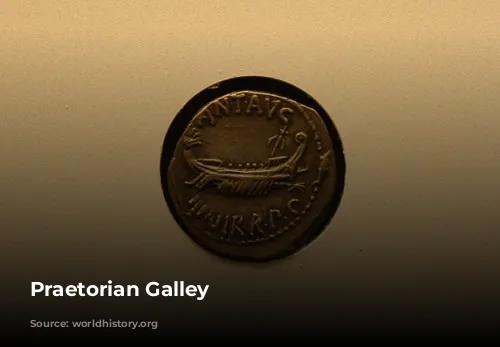
The Roman Naval Arms Race
The Romans weren’t always the maritime masters. In 311 BCE, they only had a handful of warships, while the Carthaginians, their primary rivals, boasted a mighty fleet. The Romans needed to catch up, and they did so by copying a Carthaginian quinquereme, a five-banked galley, which had run aground.
This led to the construction of a 100-strong Roman fleet, but their quinqueremes were heavier and less maneuverable than their Carthaginian counterparts. However, Rome persevered, and eventually, they built a navy that dominated the Mediterranean.
The Variety of Roman Warships
The Roman navy wasn’t just about quinqueremes. They also deployed triremes, quadriremes, and other warships, each with its unique features and advantages. The trireme, a three-banked galley, was the dominant warship for centuries. It had three rows of oarsmen, with a total of around 150 rowers.
Interestingly, contrary to popular belief, rowers weren’t slaves. They were mostly Roman citizens, serving in the military.
The trireme was eventually replaced by larger vessels – the quadrireme with four rows of oarsmen and the quinquereme with five rows. The quinquereme, with its 300 rowers and 90 oars on each side, was a fearsome ship, faster and more resilient than the trireme.
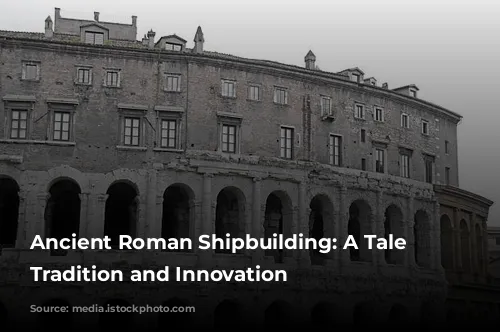
The Importance of Merchant Ships in Roman Trade
While warships were vital for defense and power, Roman trade relied heavily on merchant ships. These vessels were built for carrying large quantities of cargo over long distances. Speed wasn’t a priority, so they had a different hull design, allowing them to carry more weight and sail more stably.
They were well-equipped for long voyages. Merchant ships had two massive rudders at the stern and multiple masts with large square sails and a smaller triangular sail at the bow. Their cargo capacity ranged from 70 to 600 tons, carrying agricultural goods, raw materials, and other valuable commodities across the Roman Empire.
The Roman merchant fleet was a testament to their economic power. They connected the far corners of the empire, transporting goods from Egypt’s Nile Valley to the heart of Rome. Their merchant ships were truly marvels of engineering, carrying vast quantities of goods and playing a critical role in the Roman economy.
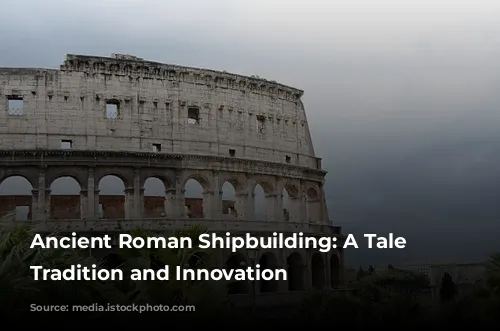
Navigation in Ancient Rome: A Blend of Tradition and Observation
Roman navigation relied on a blend of ancient knowledge and keen observation. They didn’t have sophisticated instruments like compasses or GPS. Instead, they relied on handed-down experience, local knowledge, and the natural world. In good weather, sailors could often navigate by sight, using recognizable landmarks along the coast.
Written sailing directions, known as periploi in Greek, were a vital tool. These guides, originally written in Greek, were first introduced in the 4th century BCE. They covered routes throughout the Mediterranean, and by 50 CE, they included routes to the Atlantic, Africa, and even as far as India.
When land was out of sight, Romans used the stars and sun for navigation. They also used the wind and the swell of the sea to help them estimate their course.
These navigational skills were largely inherited from the Phoenicians, who were renowned sailors. They were pioneers in applying astronomical knowledge to navigation at sea, and the Romans learned much from their experience.
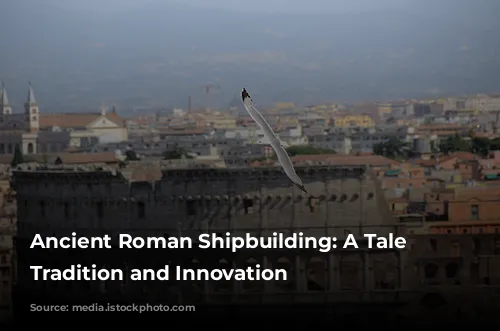
The Rhythm of Roman Shipping: Coordination and Cooperation
Imagine coordinating hundreds of rowers in perfect harmony. That’s the challenge Roman sailors faced, and they had a clever solution. They used a musical instrument, usually a wind instrument, to signal the rowers and keep them in sync.
Roman seamen were skilled in interpreting the natural world. They knew how to use the wind to their advantage and how to manage their sails in various weather conditions.
Their ships sailed along established routes with regular schedules. From the provinces, merchant ships carried supplies to the bustling ports of Italy. Rome, a huge city for its time, with a population of about one million, relied on these ships to bring goods from all over the world.
The port of Ostia, at the mouth of the Tiber River, was a major hub for Roman trade. Every year, 1,200 large merchant ships reached its docks, bringing goods from the far corners of the Roman Empire.
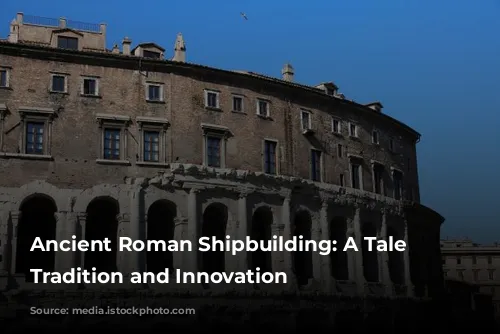
Navigating the Waves: Speed, Time, and the Mare Clausum
Roman ships didn’t just sail along the coast; they traversed the entire Mediterranean. They ventured into the Red Sea and the Indian Ocean, and even ventured into the Atlantic, sailing along the coasts of France, England, and Africa.
Their voyages were well-timed, with specific routes and schedules. A trip from Ostia to Alexandria, Egypt, could take 6 to 8 days, depending on the winds. Travel from south to north or east to west was often slower due to unfavorable winds.
However, winter brought a standstill to commercial navigation in the Mediterranean. This was called the Mare Clausum, a period of four months when sailing was considered too dangerous due to stormy weather.
The Legacy of Roman Shipping
The ancient Romans were true masters of the sea. They built ships larger and more technologically advanced than any built before, and their legacy would not be surpassed until the 16th century. They sailed across vast distances, connecting their vast empire and bringing goods from all over the world.
Roman shipping was a complex and well-organized system. Their merchant ships carried goods, their warships ensured safe passage, and their skilled sailors navigated the waters with a combination of tradition and technology.
The ancient Romans left an indelible mark on the history of shipping, demonstrating the ingenuity and perseverance of this civilization. Their ships, their sailing routes, and their maritime prowess remain a testament to their ambition and their mastery of the sea.
